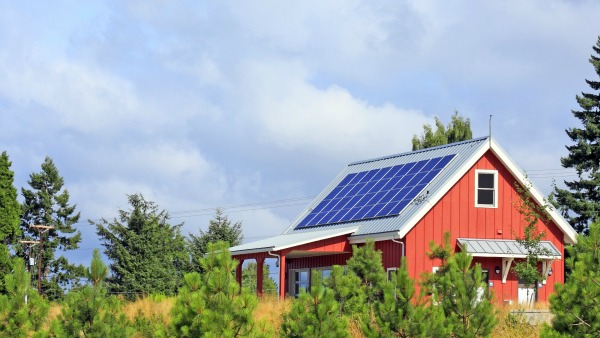
This is a quokka. It’s got nothing to do with utilities, but it’s cute.
Last week, I posted on the fight between electric utilities and solar advocates over rooftop solar power. Today, I want to pull back the lens and begin to tackle the bigger question: How should utilities work? What’s the right way to provision and manage electricity in the 21st century?
There’s very little public discussion of utilities or utility regulations, especially relative to sexier topics like fracking or electric cars. That’s mainly because the subject is excruciatingly boring, a thicket of obscure institutions and processes, opaque jargon, and acronyms out the wazoo. Whether PURPA allows IOUs to customize RFPs for low-carbon QFs is actually quite important, but you, dear reader, don’t know it, because you fell asleep halfway through this sentence. Utilities are shielded by a force field of tedium.
It’s is an unfortunate state of affairs, because this is going to be the century of electricity. Everything that can be electrified will be. (This point calls for its own post, but mark my words: transportation, heat, even lots of industrial work is going to shift to electricity.) So the question of how best to manage electricity is key to both economic competitiveness and ecological sustainability.
It’s time to start talking about utilities. I, your courageous blogger and servant, am going to attempt to lay out, at a high level, how utilities work and why, the challenges facing them, and what a utility more suited to the 21st century might look like. It’s a complicated problem, but I think the basics are approachable by ordinary citizens, who very much need to get involved and speak up on these issues. Occupy PUCs! (You’ll get that joke after you read my next few posts.)
Why utilities are the way they are
OK, so. To understand why utilities need to change, it helps to understand why they are the way they are. That takes us back to the turn of the 20th century, as electricity was just getting a foothold in some big American cities. Small power plants, using reciprocating steam engines to generate electricity, were popping up all over, but the power they produced could reach only about a mile’s distance before fading on the copper lines.
Then along came two technologies that changed our relationship to electricity and have shaped American life ever since.
First, reciprocating steam engines gave way to more efficient, more scalable steam turbines. And second, local direct current (DC) power was joined by alternating current (AC) transformers that could ramp up voltage enough to allow electricity to travel very long distances with relatively little loss. Together, steam turbines and AC transmission lines formed the foundation of the modern electrical system and remain its dominant technologies.
Steam turbines exhibited classic economies of scale. The bigger you made them, the cheaper the power. And with AC transmission lines, you could send the power as far as needed to find customers. To take full advantage of these capabilities, though, you needed scale. The bigger the better.
Economies of scale, with the concomitant need for large, long-term capital investments, made utilities what were called at the time “natural monopolies.” As with railroads, it didn’t make sense to lay down multiple competing networks; it would be wasteful, and neither competitor would be able to capture the full benefits of scale. It was inevitable that one entity would end up provisioning power. And by maximizing the benefits of scale, a monopoly would be best for consumers too.
At the time, however, railroads and other monopolies were notably unpopular, for good reason — they were often corrupt and lawless. Utility folks didn’t want progressive reformers attacking them. It was in everyone’s interest to put a stable structure in place.
So that’s what happened. In the early 20th century, the American people struck a deal with the utilities, an enduring agreement known as the “regulatory compact.” It remains in place, more or less intact, to this day.
Here’s how the regulatory compact works.
In a particular service area, a utility is granted a monopoly; in that area, it is the sole electricity provider. It is allowed to charge its customers whatever rates are necessary to cover costs and provide for a reasonable rate of return on investments. In exchange, the utility has to make investments sufficient to provide reliable, low-cost power to any customer in the area who wants it, with minimal “line losses” (i.e., “leakage” of power from power lines). To ensure the utility does not abuse its power, a public utility commission (PUC) monitors its activities and has to sign off on its rates.
That’s the bargain: The utility provides low-cost, reliable power. In exchange, it gets a captive customer base.
Why the utility structure no longer works

This quokka is listening.
There are a few key things to note about the regulatory compact.
First, note that this arrangement looks almost nothing like a “free market” as envisioned by classical economists. These are entities legally protected from competition, charging government-approved prices, receiving guaranteed returns. It is the most Soviet of economic sectors. (Keep this in mind the next time someone glibly refers to “the market” in discussions of coal or solar.)
Second, note that the utility makes money not primarily by selling electricity, but by making investments and receiving returns on them. If it builds more power plants and power lines, it makes more money.
Add these together and you see the basic incentive structure at work. In most economic sectors, businesses live in fear of competing businesses coming in and providing customers with a better value proposition. They must be vigilant, cut costs, and innovate. That is the power of markets.
But utilities do not fear competition. Their customers cannot live without their product, or purchase it elsewhere. Their profits are guaranteed so long as they can justify their rates to a PUC. All they need to do to increase profits is to build more stuff — more power plants, more substations, more power lines, more.
When the regulatory compact was established, this made perfect sense. The demand for power was inexorably rising and there was a need to scale up rapidly. Given all the unregulated monopolies at the time, the regulatory compact was actually fairly progressive — at least it provided explicitly for public oversight.
But make no mistake: it was designed to electrify the country, to enable more people in more places to find more uses for electricity. Demand grew so fast that utilities were proposing, getting approval for, and making huge investments right and left, as fast as they could. And everything got bigger. The mania for gigantism reached its peak in the ’70s, with the nuclear craze. Finally, a technology powerful enough to fuel the meteoric rise in electricity consumption that was going to last forever. (Ahem.)
Now fast-forward to the present. The regulatory compact remains the same, the incentive structure it created remains the same, but circumstances in the U.S. have changed in two big, overarching ways.
The first, which has just begun to emerge but will accelerate in coming years, is that demand for utilities’ services is slowing. Depending on which forecasts you believe, electricity consumption may even begin declining in some states over the next few decades.
Why? Some of it is merely the “offshoring” of industrial activity. But a substantial chunk is the recent explosion of energy-efficiency technologies and investments. Alongside that is the maturation of what’s called “demand response,” the ability to shift electricity use forward or backward in time in response to price signals. (Demand response doesn’t reduce total load, but it can reduce peak load; utilities have to invest/build enough to meet peak load, so if you reduce peak load, you reduce needed investments.)
Alongside that, individuals now have the power to generate their own electricity with solar panels and other distributed generation technologies. Utilities do not own that distributed generation; it’s an investment upon which they receive no returns. And it represents a reduction in demand for what they are selling, a reduction in use of their grid infrastructure, and a reduction in the need for future power infrastructure.
For all these reasons, many energy nerds believe that electricity demand in the U.S. will never again rise as fast as it did this century, and might even plateau or fall. But remember, utilities are in the midst of paying off large, 20-plus-year investments. If they get less than expected from some customers, they have to charge the other customers more in order to get the same rate of return. They do not like that one bit (nor do the other customers). Furthermore, the unpredictable rise of all these disruptive technologies casts their future investments into doubt. In the long term, they face the threat of lower profits and, well, shrinkage. They don’t like that one bit either.
And that is perverse, because the other broad change since the early 1900s is a recognition of the threat of climate change and an understanding of the radical reduction in fossil-fuel use required to address it. As a society, we need energy efficiency and demand response. We need distributed renewable energy. We need to cancel out future power plants and transmission lines. All those things are to the good, economically and ecologically. Yet utilities have every incentive to oppose them, as they are direct threats to their familiar, comfortable business model, which has survived nearly a century unchanged.

This quokka is tuckered out by all this utility talk.
And so I think we need to do more than fiddle with rate structures or mandate arbitrary levels of efficiency or renewable energy. We need a ground-up rethink of how utilities work, how they are structured, and how they can be reformed in a way that enables and accelerates long-overdue innovation in the electricity space. More on that soon.





